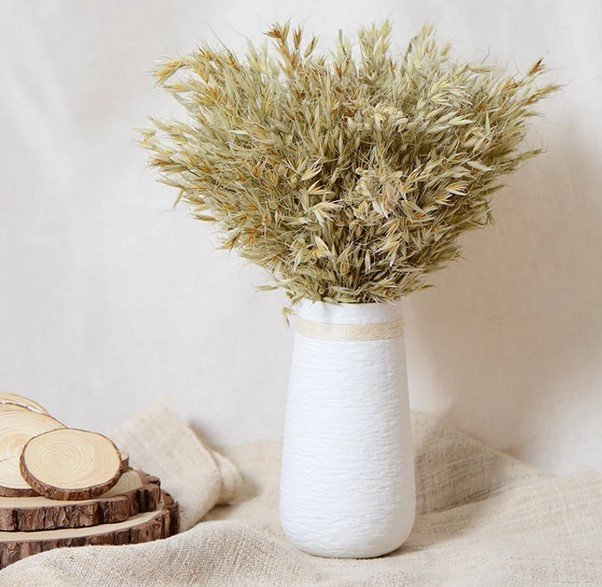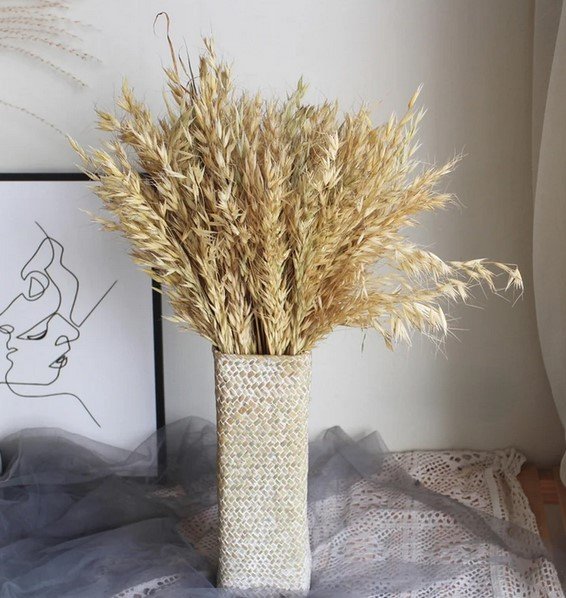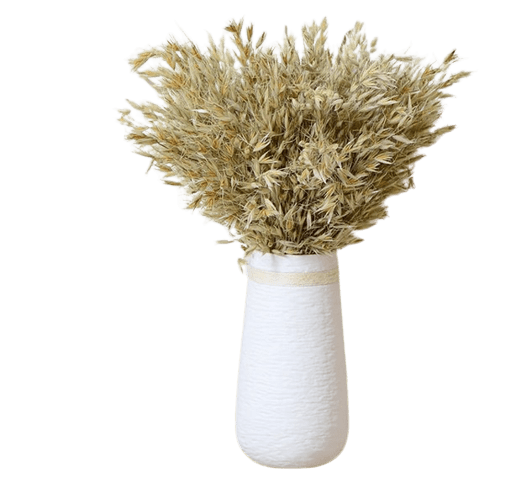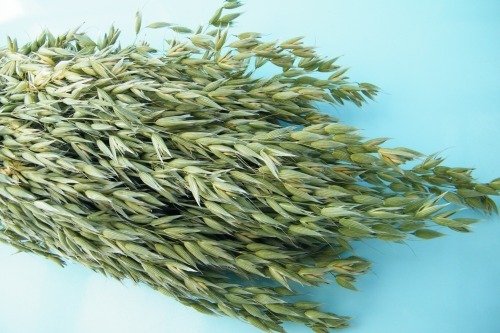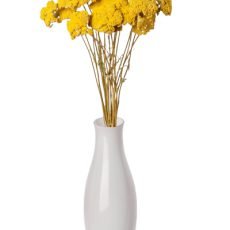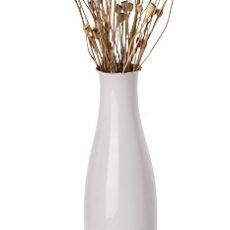Description
Dried oat grasses
Dried oat grasses : Wild oat or avena fatua is a species of grass in the oat genus. It is known as the common wild oat. This oat is native to Eurasia but it has been introduced to most of the other temperate regions of the world. It is naturalized in some areas and considered a noxious weed in others. Avena fatua is a typical oat in appearance, a green grass with hollow, erect stems 1 to 4 feet (30–120 cm) tall bearing nodding panicles of spikelets. The long dark green leaves are up to a centimeter wide and rough due to small hairs. The seedlings are also hairy.
The seed kernel is thinner, longer, darker and hairy when compared with the seed of the common cultivated oat (Avena sativa). This species and other wild oats can become troublesome in prairie agriculture when it invades and lowers the quality of a field crop, or competes for resources with the crop plants. It takes very few wild oat plants to cause a significant reduction in the yield of a wheat or cultivated oat field, even though the seeds are a type of oat.
Mostly, wild oats grow and germinate in early to mid-spring . Wet and cool conditions promote optimal growth. Crops that are sown earlier are more susceptible to pests. The use of nitrogen fertilizers in early spring or autumn stimulates germination. The growth of roots and stems of wild oats is slow in the first two weeks, but then increases rapidly. Wild oats give rise to secondary stems during one month. for more information please read Iran wild oat plant specification .
Wild oat specifications
- Scientific name : Avena fatua
- Order : Poales
- Family : POACEAE – Wheatgrass
- Subfamily : Pooideae
- Genus : Avena
- Species : A. fatua
- Native region : Native to the Mediterranean. Ethiopia, N. Africa, Europe and Asia among other locations
Similar species
Plants in the genus Avena resemble wheat (Triticum spp.) when growing; only obviously differing from wheat upon maturity when its ears hang downwards, while mature wheat ears face upwards.
- In vigour, growth habit and large spikelets, Avena fatua is similar in appearance to
cultivated oat (Avena sativa). However, Avena sativa has a denser panicle (flower cluster), the spikelets (unit of a flower cluster) have only 0-1 awn (bristle-like structure), and the florets (grass flower) do not readily separate and shed. - Avena sativa the crop is further distinguished from A. fatua by spikelets which in the crop are not articulated above the glumes (small leaf-like structures below or enclosing a flower, or a flower spikelet in the grasses and sedges) and the lemmas (lower and outermost of the two scales that are part of a grass floret and enclose a grass seed) are smooth.
- Avena sativa: basal scar is horizontal rather than oblique as in A. sterilis and A. fatua and its rachis (main stem of flower cluster) tip is jagged, pointed, and fractured;
- Avena sativa: scutellum (modified seed leaf) outline on the one-seeded fruit of a grass (caryopsis) is clearly evident, whereas it is not very clear on A. sterilis and usually less so on A. fatua;
- Avena sativa: Lemmas smooth and shiny, whereas those of A. sterilis and A. fatua are grainy or rough.
Color :
Natural color
Specification :
size :
Minimum quantity of order (MOQ) :
Title of all kinds of dried oat grasses decors :
